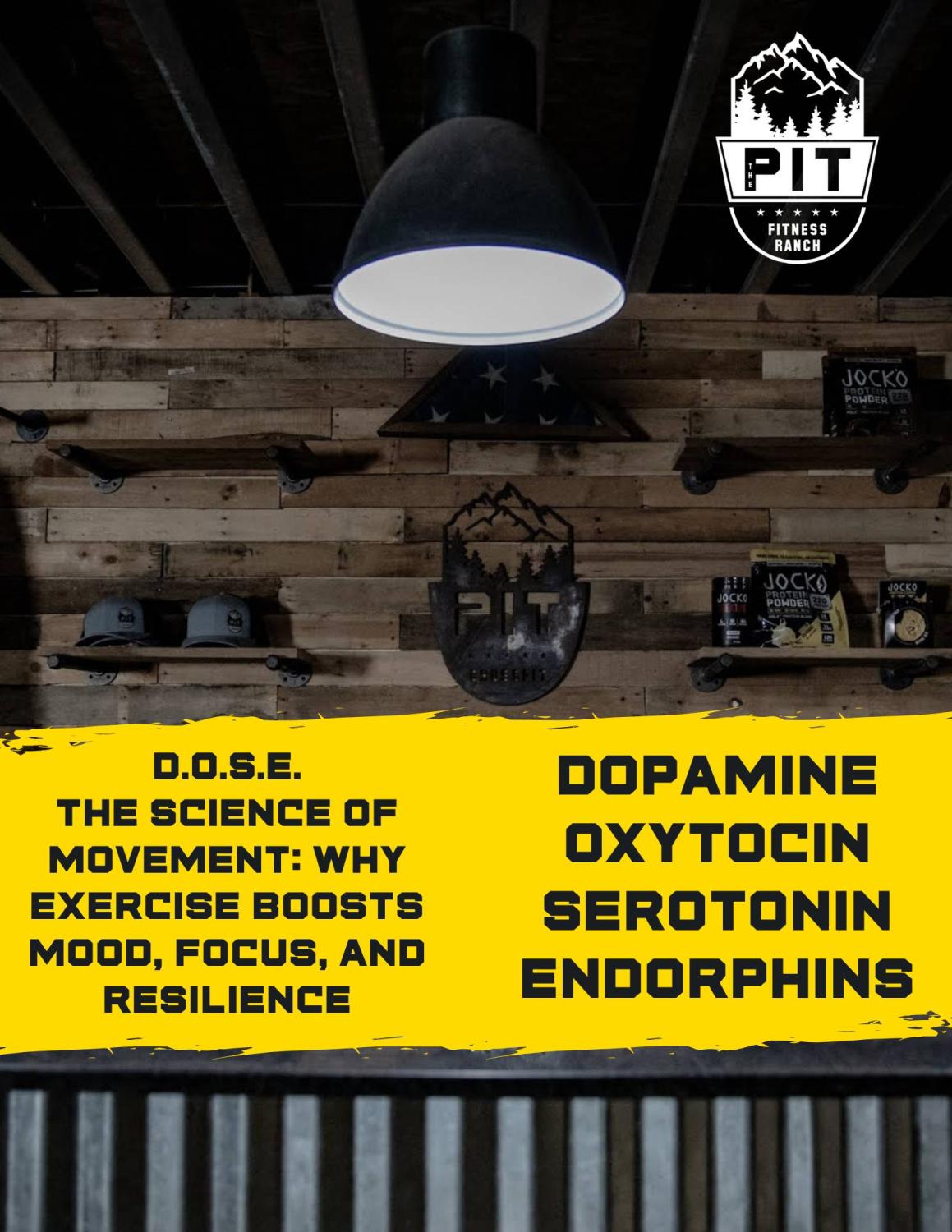
Unlock the Brain Chemistry of Performance and Well-Being
The Science of Movement: Why Exercise Boosts Mood, Focus, and Resilience
If you’ve ever finished a workout feeling more focused, optimistic, or calm, there’s a reason—and it’s grounded in neuroscience.
Exercise activates four key neurochemicals: dopamine, oxytocin, serotonin, and endorphins. Collectively referred to as the “DOSE” chemicals, these compounds enhance mood, improve motivation, and support emotional regulation.
Drawing from the research of Dr. Andrew Huberman (Stanford University neuroscientist and host of the Huberman Lab Podcast), here’s a breakdown of how each works and why they matter:
- Dopamine – Motivation and Drive
Dopamine plays a key role in motivation, learning, and reward anticipation. According to Dr. Huberman, dopamine is released not only after completing a task, but during the process of pursuing it—including physical effort like warming up or planning a workout.
- Builds mental resilience and momentum
- Increases focus and consistency over time
- Supports long-term habit formation and satisfaction
- Oxytocin – Human Connection and Belonging
Often known as the “bonding hormone,” oxytocin increases through social interaction, group movement, and shared goals—such as team workouts or fitness challenges.
- Reduces stress and cortisol levels
- Strengthens social connection and trust
- Enhances emotional safety and motivation in group settings
- Serotonin – Mood and Emotional Balance
Serotonin regulates mood, sleep, memory, and even digestion. Exercise—especially when paired with natural light—can significantly increase serotonin availability.
- Improves mood and reduces symptoms of anxiety and depression
- Regulates circadian rhythm and sleep quality
- Promotes emotional stability and mental clarity
- Endorphins – Natural Pain Relief and Euphoria
Endorphins are released in response to physical effort and mild discomfort. They act as the body’s natural painkillers and create a sense of euphoria, often referred to as the “runner’s high.”
- Boosts energy and mental clarity post-exercise
- Helps reduce perception of effort and physical pain
- Supports overall sense of well-being
The Takeaway: Movement Is More Than Physical
As Dr. Huberman puts it, “Consistent movement is one of the most powerful, zero-cost tools we have for enhancing brain and body health.”
By incorporating regular training into your lifestyle, you’re not just getting stronger—you’re improving your brain’s chemistry and your capacity for motivation, connection, focus, and emotional resilience.
Want to Learn More?
Check out these resources:
- Huberman Lab Podcast – “Using Dopamine to Drive Motivation & Focus”
- Journal of Neuroscience – “Dopamine Release During Physical Effort”
- Frontiers in Psychology – “The Effects of Exercise on Brain Neurotransmitters”
- Harvard Health – “Exercise and Depression”
Stay Consistent. Stay Resilient. Keep Moving.
— The Pit Fitness Ranch Team
